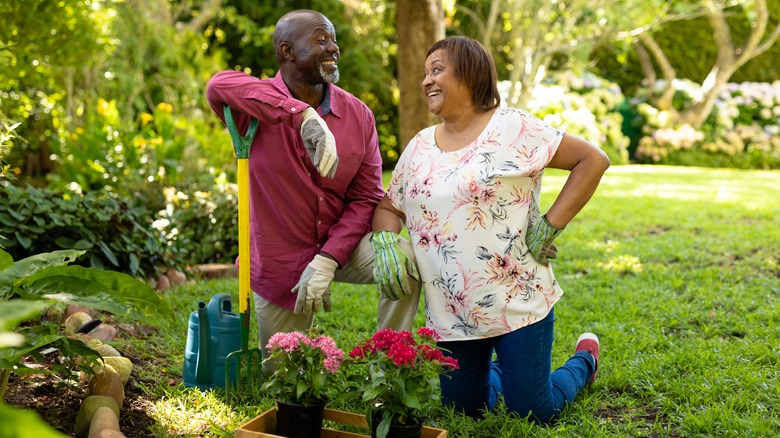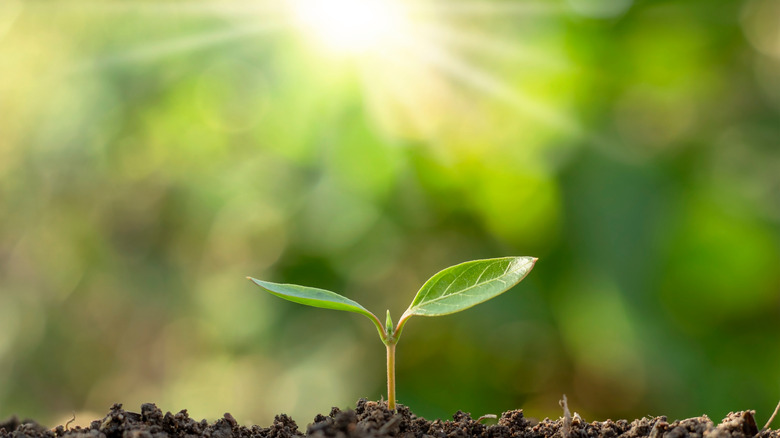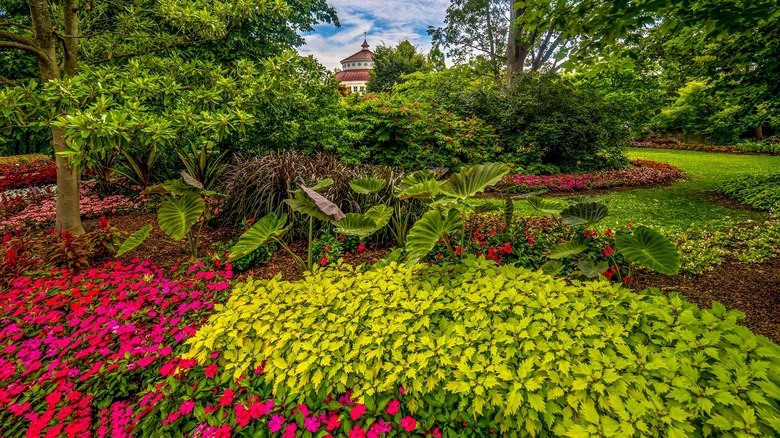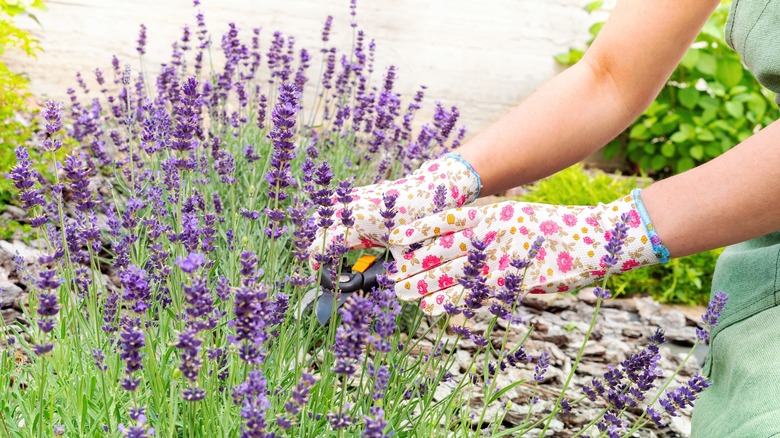The Best Layout For Your Garden, According To An Expert - Exclusive
Whether you are a plant pro or an aspiring green thumb, when it comes to starting a new garden it helps to have a plan. Although you might feel impatient and just want to get your greens in the ground, it will really pay off if you take some time and come up with a strategy that best suits your backyard and plants in particular. Doing do can ensure that your flowers and veggies have the opportunity to grow their best. This can in turn save you time and money, and will hopefully increase the enjoyment you have in your lovely, healthy garden.
Luckily, we have the inside scoop on how to create the best layout for your garden directly from a pro. In an exclusive interview with House Digest, the resident botany expert for the NatureID app, Julia Omelchenko, was able to give us tips and tricks that can help you to achieve the best possible results.
Consider the growing conditions of your plants
Before you grab your shovel and start digging, there are a few factors you should keep in mind with regard to how your garden should be laid out. "Go for either a flat plot of land or a south or east well-lit slope," Julia Omelchenko explains. "Sunlight is also essential; light-loving plants should be planted in well-lit areas, and shade-loving ornamental perennials can be planted beside trees." This is also important for variegated plants. "They dislike shady locations, as their leaves turn dull and lose their attractiveness when they lack sunlight," Omelchenko continues.
Next, Omelchenko says you should make sure you're making smart seed selections. "When choosing plants, you need to pay attention to their growing conditions," she advises. "Take into account your plant's preferences when it comes to the composition, fertility, and pH of the soil." Also, assess the weather, as Omelchenko reminds us that this is vital. "You need to consider the amount of precipitation in your area and maintain an appropriate level of humidity that is necessary for a particular plant species," she adds.
Make sure your plants will work well with each other
Now that you have the perfect location ready for your seeds and seedlings it's time to make sure that they can all coexist with each other. "Some plants secrete substances that can inhibit or stunt the development of nearby plants — this phenomenon is called allelopathy," Julia Omelchenko notes. "For example, the walnut suppresses all neighboring plants, having a mostly negative effect on them. The apricot suppresses cherries, so they shouldn't be planted near each other." So be sure to do the research lest you lose a treasured bush or tree.
Another factor Omelchenko suggests you keep in mind when perfecting your garden layout is to judge the space that is required between each flower. "When planting perennial plants, make sure to keep a distance between them," she continues. "Don't allow the leaves and branches of different plants to overlap. If the plants are planted too closely, they'll stop growing because their root systems won't have enough space and nutrients for normal development." This means that you should pay special attention to how you're planting seedlings and other flowers. Also, keep a keen eye out when you're growing your greens from seeds as it can be trickier to judge how large they will extend.
Leave yourself enough space to maintain your plants
Finally, it's important to allow enough room to take care of your garden. Whether it's a veggie patch, flower plot, or even maintaining a row of trees, you have to be able to easily get in and around plants for maintenance. "One of the most important conditions for growing trees or shrubs is timely cleaning, which includes pruning and getting rid of the fallen leaves, flowers, fruits, or needles," Julia Omelchenko explains. "Be sure to weed out your garden in time." That way proper circulation won't be disrupted and plants will remain healthy.
If you don't plan for space to be able to get to your plants, they could be neglected which might lead to bigger problems like fungus, especially in warm and humid climates. "To avoid diseases, thin out the bushes and tree crowns," Omelchenco continues. "Always remove fallen fruits, as they attract insects and also contribute to the development of fungal infections. Feed your plants in time and check them for pests and diseases."
Overall, to achieve the best layout for your garden it helps to think about the unique plants and how they can affect your plot in the big picture. "To get a perfect garden, you need to find a personal approach to each plant that you grow," Omelchenko concludes.



